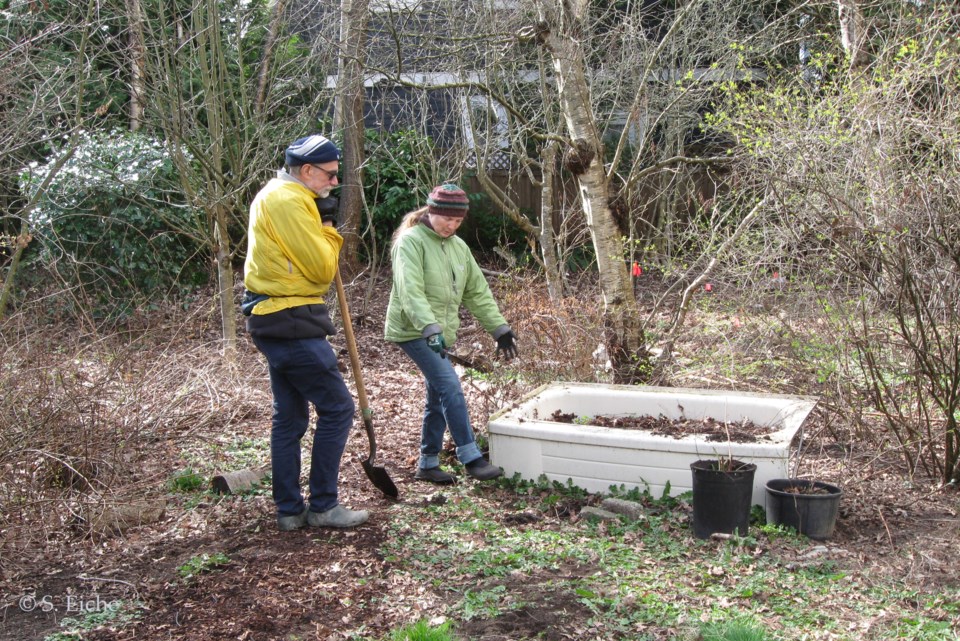When I was a little girl, in Germany, strolls through the forest were as much a part of our normal routine as eating meals. I was born in a town that advertised itself as the town at the edge of the forest. In fact, the forest started where the church and schoolyards ended. After we moved to Canada and returned to Germany for visits, we would stay with relatives in various towns in Germany — and there, too, a forest was never more than a five-minute walk or drive away. As an adult I lived in Florence, Italy for over thirty years. The Mediterranean landscape is arid, but there are still woods near Florence. The city is ringed by hills covered with pines, cypresses, oaks, which you can reach in minutes by car or public transport, even on foot.
Spending time in woods and forests was so normal for us in Europe that there was no special word for the activity, in any of the languages. But a few decades ago, a name was invented, and it’s become a widely used expression — in 1982 the Japanese Ministry of Agriculture and Fisheries coined the term shinrin-yoku, forest bathing. It’s considered a key practice in preventative healthcare in Japan.
Forest bathing was developed to help Japanese workers counteract the effects of the stress of modern life, which is to say the stress caused by modern technology. All over the world research is currently being carried out on the benefits of spending time in nature, especially in the midst of trees.
This is what shinrin-yoku involves, following the Japanese prescription. You head for a forest, having first detached yourself from all your electronic devices. You are to rely only on your senses and use them to connect with your surroundings. You tune into nature. You’ll hear the birds singing, water gurgling, and the wind rustling the vegetation. You’ll see the light filtering through the tree canopies and illuminating the flora of the woods. You’ll smell the leaves of different trees and the damp earth with the decaying plant materials covering it. You’ll touch the roughly textured bark of trees and feel the softness of the moss.
You’ll wander without a purpose, except to let your senses roam freely and discover the forest. You’ll be breathing air that’s loaded with phytoncides, described as airborne chemicals or tree essential oils, which plants use to protect themselves from harmful bugs, bacteria and disease. The New York State Department of Environmental Conservation writes “When people breathe in these chemicals, our bodies respond by increasing the number and activity of a type of white blood cell called natural killer cells or NK. These cells kill tumor- and virus-infected cells in our bodies.” Studies have shown that forest bathing can also alleviate depression, anxiety and stress. It boosts the immune system, lowers blood pressure and benefits sleep.
I associate trees as well with a sense of protection, safety, even refuge — for wildlife, of course, but also for humans. There are a few areas in Richmond with large trees where I’ve experienced an intense sense of well-being. One of these is in Minoru Park, near the Clement Track, in the stretch of paved walkway that leads from the track northwards, past the playground. I’ve noticed that when I reach that particular point in my walk, something drops over me like a mantle of calmness. It’s a brief sensation, because soon I’m out in the open away from the trees again. But I notice it each time I pass through that small grove.
Although a spacious forest is an ideal place for reaping the rewards of forest bathing, you can also experience the benefits of phytoncide exposure in your yard if you have trees, especially mature trees.
Whenever you want to take a dip in the forest, no matter how large or small that forest is, just remember that it’s essential to tune out of technology and tune into nature. Aim for a return to being in touch with the real, not artificial, source of life.
Sabine Eiche is a local writer and art historian with a PhD from Princeton University. She is passionately involved in preserving the environment and protecting nature. Her columns deal with a broad range of topics and often include the history (etymology) of words in order to shed extra light on the subject.



